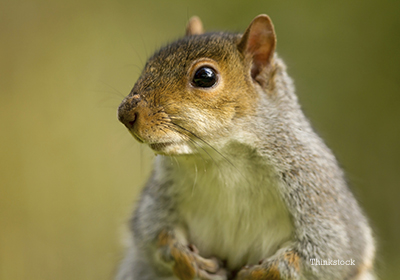
For more from Dr. Ruth MacPete, find her on Facebook or at www.drruthpetvet.com!
Most of us have come across injured or abandoned wildlife at some point in our lives, but do you know what to do? Should you leave it alone? Should you pick it up? Should you call someone? Since most people are unsure of what to do, today’s blog will discuss how and when to help injured or abandoned wildlife.
Before handling or disturbing wildlife, it is important to first determine if the animal really needs your help. It is usually easy to determine if an animal is sick or injured. If you notice an obvious injury, like a bird attacked by a cat or with a broken wing, the animal needs your help. However, it can be difficult to determine if an animal has been abandoned or orphaned. Before you move an animal, call a wildlife rehabilitator. If you come upon a baby bird that has fallen out of it’s nest, return the baby bird to its nest if you can safely reach it. It is a common misconception that a mother bird will reject her nestlings if you handle them. With few exceptions, birds do not have a good sense of smell and will not reject their young if they have been handled. Likewise, if you come upon a nest of bunnies, do not immediately assume that they have been abandoned. Baby bunnies are typically fed at dawn and dusk. Mother bunnies often leave their young alone during the day and return to them in the evening. If you are concerned, it is best to call a wildlife rehabilitator before taking a nest full of bunnies.
Once you have determined that an animal needs your help, how do you transport them? It may seem obvious, but never attempt to rescue dangerous wildlife by yourself. Coyotes, foxes, bobcats, racoons, skunks, rattlesnakes, and even deer can be dangerous if they are injured or scared. In general, avoid handling adult animals because of the risk of injury. Another reason why not to handle wildlife is the risk of rabies and other zoonotic infections. In the United States, bats are the most common source of rabies but it can also be found in racoons, skunks, foxes, and coyotes. Because of the risk of rabies exposure, never handle a bat. Call your local wildlife rehabilitator or animal control officer for help. If the animal you are calling about is safe to handle, make sure you wear gloves before touching them to protect yourself against zoonotic infections. Gently transport the animal using a towel and carefully place them in a secure box lined with paper towels. Be sure the box has air holes already punched in it. Keep all wildlife warm, and in a dark and quiet place away from children and other animals. Do not attempt to feed the animal or rehabilitate the animal yourself. Not only could this harm the animal, but it is against the law in many areas. Instead, take the rescued animal to a wildlife center as soon as possible. In the event that you can not find a rehabilatation center, contact your local veterinarian for assistance.
For help locating a wildlife rehabilitator in your area, visit http://wildliferehabinfo.org/ContactList_MnPg.htm.
If you have any questions or concerns, you should always visit or call your veterinarian – they are your best resource to ensure the health and well-being of your pets.
